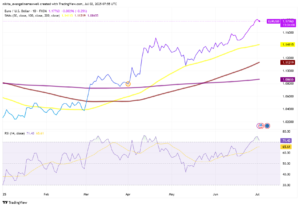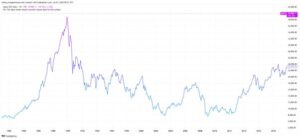ECB Policymakers Divided on Large Rate Cuts as Economic Growth Worries Loom
Policymakers at the European Central Bank (ECB) are divided on whether to implement a large interest rate cut in December, despite growing risks to both economic growth and inflation. As the global economy faces slowdown pressures, the ECB has already implemented its third 25-basis-point rate cut this year in October. This marks the first time in 13 years that the ECB has delivered back-to-back rate cuts, reflecting its attempt to manage the eurozone’s weakening economic outlook and declining inflation.
Oct 23, 2024 11:20 PM

Can Charts Predict Central Bank Moves? Reading Price Action Ahead of Rate Decisions
Jul 02, 2025 2:55 PM
Every few weeks, traders and investors alike brace for impact. Central banks (whether it’s the Fed or the ECB) step up to the mic to deliver interest rate decisions that could jolt the markets. But here’s something seasoned traders know: the charts often whisper before the officials speak.

Japan’s Stock Market Is Booming – Is It Different This Time?
Jul 01, 2025 12:28 PM
You know what’s funny? For most of the last 30 years, nobody really talked about Japanese stocks unless it was to reference that massive bubble in the 1980s. Since then, the Nikkei mostly drifted – some up years, more down years, and a general sense that the whole thing was just... stuck.

Dollar Drops, Tech Soars, and Oil Tanks: A Bullish End to June | Weekly Recap: Weekly Recap | 23 June – 27 June 2025
Jun 30, 2025 8:32 AM
This week’s economic data showed a mix of cooling inflation and slow-but-steady growth. In the US, the Fed’s preferred inflation measure – core PCE – rose just 0.2% in May, bringing the annual rate to 2.7%. That’s close to the Fed’s 2% target, supporting the idea that price pressures are easing. However, Americans are spending more cautiously: personal spending dipped for the second time this year, and consumer confidence fell sharply in June as worries about jobs and the economy grew. Jobless claims edged down slightly, suggesting the labour market is cooling gradually.

What Is a Central Bank – And Why Do Markets Hang on Its Every Word?
Jun 26, 2025 1:58 PM
Ever wonder why the stock market reacts so strongly when someone from the US Federal Reserve speaks? Or why the value of the euro shifts after a decision from the European Central Bank (ECB)? That’s the power of central banks – institutions that might seem far removed from everyday life, but actually have a big say in how much we pay on our mortgages, how expensive groceries get, and whether the economy runs hot or cold.

